Category: Bullying Resolution Project (Page 1 of 2)
Empathy and Friendship Group Summary
Clare, Kelsey, Caitlin, Sara, Monica
Empathy is the ability to recognize, understand, and share the feelings of another individual. This skill is useful for anti-bullying efforts in recognizing similarities and being mindful of others. We learned that bullying occurs in many different environments, across many different situations, and thus affects many individuals besides the victim and the bully. Our goal was to create a functional resource for the people in the community— teachers, Big Brother/ Big Sister, and other children-focused groups— to teach and engage with empathy in the classroom, community, and world. By addressing the whole class, or entire group atmosphere, we want to make everyone aware of the effects of bullying. Our targeted audience is children and teachers, as our research shows that the earlier children engage with radical empathy and friendship, the easier it is for them to implement these concepts throughout their life. Children need to understand and be exposed to these factors in order to comprehend the effects and process of bullying. They are then aware of the bullying process and what part they play or what responsibility they could take to change the situation. It is our hope that the PowerPoint will lay the groundwork for how to teach children empathy and the role empathy plays in preventing and decreasing the presence of bullying. As well as teaching children how to accept and embrace individuals that are different from them by being empathetic.
We want to provide tools and build confidence in children. Some believe that bullies have low self esteem or are unable to empathize with others; however, we learned that bullies are able to empathize, but typically choose to ignore the harm they are causing others. Bullies prey on those with less self esteem and know how to manipulate and evoke pain in them thus suggesting they are capable of putting themselves in the emotional shoes of another. An important take away tool we hope to instill in children is having an attitude that does not tolerate bullying, but rather having the courage to acknowledge AND accept that differences are natural part of life despite what society may say.
Empathy and Friendship Group Project
Cyberbullying is defined formally as the “willful and repeated harm inflicted through the use of computers, cell phones and other electronic devices” (Patchin and Hinduja) With the use of the internet increasing drastically-nearly 3.5 billion people are internet users-individuals all over the world have this tool at their fingertips. This immense connectivity also means that bullying can occur by nearly anyone at any time, especially via social media sites. It is far easier to type unkind words than it is to say them face to face (Patchin and Hinduja). This gives individuals who wouldn’t bully face to face an opportunity to do so quickly and easily. Because of the ease at which cyberbullying can occur it is crucial to find ways to develop empathy in this online environment. Empathy is understanding what someone is feeling. When you see someone in person, they may say they’re fine but you can read their facial clues and see that they are far from being fine. When you talk with someone online, you lack the critical facial clues to see how they are truly reacting to something. With the internet advancing so rapidly, it is easy to sit behind the mask of the screen and make things up or say things about someone. Without being face to face, it is easier for kids (and even adults) to create and circulate posts that could be identified as bullying. Behind a screen, it is easier to lack empathy because you aren’t physically seeing the impact of your words or actions. Teaching children and young adults to foster empathy for those that are different from them can break down biases and blossom into friendships rather than bullying. In Bully, adults used their activism to engage empathetic feelings among other parents and students. If kids were made more aware of the ways bullying can hurt beyond what we can physically see, they can start thinking about bullying differently and realize their personal responsibilities to help stop it. Parents and students sharing their stories are integral to the spread of empathetic awareness. That’s why we chose images and facts on the impact of bullying to represent our individual topics and to engage with the community.
Cyberbullying presents a particularly difficult problem for adolescents because the internet is so readily available and the anonymity that it provides makes stopping this problem very challenging. The fact that it has become so popular speaks to the huge impact that empathy can have on helping to keep bullying to a minimum. The distance the screen puts between the bully and the one being bullied keeps the emotion of how the interaction effects the one being bullied. The film Bully demonstrated how powerful empathy can be when it comes to bullying. One of the boys in the film mentioned how he used to bully kids until he realized how bad it made them feel. In the bonus material, there was a follow up on how the documentary had impacted his life. When kids saw that he was just like any other boy and how the bullying really affected him, they began to talk to him more and treat him better. Bully put people in his shoes and showed them what he was going through on a daily basis. This speaks to how powerful empathy can be when it comes to bullying. Empathy is much harder to push when it comes to cyberbullying, but if programs could be put in place to educate children and foster empathy even this type of bullying could decrease.
The media throws images towards us of what an ideal body looks like. Young children and teens are flooded with ideas of how their body should be and what it means to be man or women. These body standards are affecting children severely, about 1/3 of boys and ½ of girls ages 6-8 feel that they should be thinner (missrepresentation). Due to the fact that childhood obesity is occurring in 18% of the population, a significant portion of these children are at a healthy weight, yet they still feel as if the body they have is not enough. This media portrayal of the ideal body can lead not only to individuals feeling bad about the body they have, but to some it can justify the bullying of others body types. Not only is this type of bullying harmful to an individual’s psychological health, but it can lead to eating disorders, severely harming an individual’s physical health and possibly leading to death (eatingdisorderhope). “Body images are always cultural fabrications, yet we are encouraged to take them for granted as if they were natural” (Cavallaro 20). This quote is so important to take note of, because it is so true. We as members of a society are expected to believe what we see. For girls, we are expected to believe that being dangerously thin with a thigh gap is the only way people will like us. Most specifically, we are taught that if we look a certain way, then people from the opposite sex will love us-and everyone wants to be loved, right? For an eternity women have been told how to look, how to dress, and how to act. We are expected to wear makeup because if we don’t society will shun us. In America, women are expected to shave so that we might appeal to men. Girls have been taught that having long hair is far better than short, otherwise we might be mistaken for a man.
Enter in the body positivity movement, this is an online movement geared towards the acceptance of all body types. This does not merely mean individuals of different sizes, this extends to all genders, ages, and races, and encompasses individuals with physical disabilities as well. This social media presence of this movement is immense and has caused companies to reevaluate the way they market their products. Aerie, a lingerie and apparel store started a campaign: #aeriereal, which is both a social media campaign to celebrate all bodies and a promise not to retouch photos they use in their advertisements. The body positivity movement has lead to a community of empowered individuals and challenges the standard of what a body “should” look like. Through raising awareness and sharing stories of the impact that bullying and societal standards of beauty can have on an individual, this movement has helped foster empathy in both internet users and retail companies.
Our society is diverse and these differences are often looked upon as negatives. Standards are set for what strong, powerful, and normal people should look like and how they should act. If someone doesn’t possess these traits they are treated unfairly. The children that are bullied are targeted because they are different and don’t fit what is considered normal. Empathy and these differences are related because if there were no differences in the world, there would be no need to empathize with others. Our culture has placed a gap between differences and in order for this gap to be closed, people must understand how those that are considered different feel and what they go through on a daily basis. Getting people to empathize would get them to realize the harm that they are causing to the individuals and the society as whole. Friendship is linked to empathy in that a friend is someone you get to know well, you can begin to understand what they are thinking and feeling and you are able to be more empathetic towards them. Building strong friendships helps teach and foster empathy. We can foster friendships across differences by having empathy for the other person. In doing this we realize our differences and how the other feels and behaves, it is understanding differences and generating empathy for an individual that allows friendships to bloom despite differences.
Social media platforms are one of the most common places to find class-based stereotypes and mean-spirited posts aimed at lower-class citizens. Lack of empathy behind the screen and the continued ideas of a social “norm” perpetuate harmful images aimed at those in poverty. Circulations of pages such as “@PoorPeopleProbs” on twitter poke fun at the real life struggles of impoverished people. While it aims to be funny, it points out problems of lower-class citizens and exploits them without any regard to just how hurtful it can be. Maintaining normalcy through the “abnormal” actions or position of others is not the way our society should function.
Bullying via social media generally occurs based on socially constructed ideas of right and wrong. Individuals who do not have the “ideal” body or don’t fit the “ideal” social class or race are bullied for their differences. These two advertisements about being “beach ready” from the 1950’s and today illustrate the different definitions of beauty over time. Showing children and young adults that the concepts of right and wrong, beautiful and ugly are socially constructed and change overtime will help them realize that they don’t have to accept these ideas. Making individuals aware of differences and breaking down social constructs via these social media platforms can shed a light on the impact of cyberbullying and foster empathy in individuals. Developing empathy can allow people to ignore social constructs and develop friendships across differences.
Relational bullying is considered to be the intentional act to hurt someone by damaging their reputation and social relationships. It is also considered to be one of the most common forms of bullying. Bullying is commonly perceived to look a certain way such as kids being thrown up against the school lockers by bigger kids. This perception is one valid truth about bullying, however, there are many more ways people can stimulate bullying including: Cyberbullying: this is known to be bullying through social media. Gossip & Rumors: Spread throughout a population of individual about someone. It establishes social. Bullies typically target those who may be seen as a threat. Exclusion: This involves the act of ignoring or dismissing someone’s presence or need of belonging. The goal of the project is to help these individuals identify and distinguish relational bullying from physical bullying and implement strategies to both prevent and respond to relational bullying that occurs
A common thread that gender, socialization, and power all have is that boys are expected to carry this masculine personality. Both males and females are taught to conform to what their gender roles call them for, whether that is taking care of the family or providing for them. In relation to bullying, gender socialization for men carries the role of how they should be strong and have interests in more masculine ideals. Bullying comes into play when the actions or personality of a boy does not fall in close alignment to what is considered normal for a boy to like or do. Power then steps in when there is an imbalance in personality and role. This creates a division for the victim from the social world because then they start to believe that is really what others think about them. They begin to shut down which continues to enable the aggressor to bully.
Taunts and jokes using homophobic slang (“Fag discourse”) have as much to do with the definition of masculinity as it has to do with the fear of gay men. Homophobic language are central to shaping contemporary heterosexual masculine identities. The use of homophobic language is not just directed toward LGTBQ+ youth, but directed at straight men as well as a way of socializing acceptable hegemonic masculine activities and unacceptable behavior to learn how to “be a boy.” How one may approach identifying bullying includes understanding what exactly is bullying, such as verbal, physical and social abuse. Other factors may include how often the occurrence of this act is as well as an imbalance of power between the bully and the victim. We need to understand what bullying is and what bullying is not. Bullying is reoccurring, Represents a power imbalance between the victim and the aggressor, and is intended to cause harm.
Most literature on bullying is framed from a psychological standpoint, or individual influences and causes, rather than examining bullying as a part of the gendered socialization process. This is too simplistic a definition. We need to look at the sociology of bullying instead. In the most simplistic terms, kids are bullied for being different. Differences that often reflect broader social issues such as race, gender, and class. Bullying reflects on onset of power of the norm over the difference, also reflecting the prevalence of that social power in the larger social network.
In this presentation, we identify groups at risk of bullying based upon their gender, race, physical abilities, weight, sexual orientation, socioeconomic status, and religion. We also provide ways in which to identify those that are more likely to bully and those more likely to be bullied, while also cautioning that those roles are not static and identification of these individuals can sometimes be difficult. We include information about how bullying is currently assessed and who is currently most involved in handling bullying in schools. We provide opportunities and approaches for administrators, teachers, and coaches to address bullying based upon studies that identify the most effective ways to prevent and stop bullying
Bullying Intervention Group Project Power Point
Intervention Group Project: Bystander Programs
Ashley Clay-Johnson, Muengnenshime Goshit, & David Snow
Bullying intervention strategies can take many forms, from individual-level strategies to school-based strategies, from victim-focused to bully-focused, from punitive to preventative, restorative justice models. While we couldn’t possibly tackle all of the bullying intervention strategies out there, we chose to focus on the impact that bystander programs can have. Our research found that adult intervention is somewhat limited in its effectiveness because bullying often takes place outside of the presence of adults, namely teachers and other school personnel. When victims of bullying were interviewed, many expressed a feeling of being alone, with no one caring about them, and with good reason. Researchers further found that when other students witnessed acts of bullying, in more than eighty percent of observed situations those students cheered on, encouraged and otherwise made comments supporting the bully, not the victim. For purposes of this project, we’ve termed those students as “negative bystanders.” Negative bystanders may feel peer pressure to join in the bullying, may not like the target of the bullying or somehow think that the victim deserves the bullying treatment, may feel less accountable by joining in because it’s become a “group” activity and may see himself or herself as not as culpable as the original bully. By far, the negative bystander behavior is the primary type of behavior that our project and bystander programs generally seek to prevent.
Another type of bystander whose behavior we need to affect is what we call, for purposes of this project, the “indifferent” or “do nothing” bystander. The indifferent bystander purposefully avoids or ignores the bullying, witnesses the bullying but doesn’t take action, or adopts an attitude of “at least it’s not me.” The reasons for a bystander adopting indifferent behavior are varied, but often result from a fear of becoming the next victim, a fear of retribution from the bully, and a belief that it’s “not my problem.” Sometimes, indifferent bystander behavior is simply the result of the student not knowing what to do in the situation. Unfortunately for the indifferent bystander, he or she often still suffers negative consequences, such as guilt and anxiety over the bullying event.
Bystander education is focused around motivating and encouraging the positive involvement of bystanders who witness bullying events. Given that much bullying behavior often goes unreported to teachers and school personnel and that teachers intercede in only 15% to 18% of classroom bullying episodes, equipping other students who may witness bullying to intercede on behalf of the victim is necessary to combat bullying in situations where an adult presence may not occur. Research also shows that when bystanders intervened in the bullying, the same research showed the bullying tended to stop quickly; other research showed that close to 50% of all bullying events stop when a bystander decides to intervene. If we can find an effective way to discourage negative bystander behavior and instead encourage negative and indifferent bystanders to become positive intervenors, bystanders could be powerful agents of stopping bullying of their peers.
The first step to bystander education is developing by group consensus definitions of unacceptable behavior, including bullying and negative bystander behavior. In defining what behavior is “right” and “wrong,” it’s important for teachers to use concepts of social justice and fairness to obtain buy-in from students. The movie “Bully” showed how important it was for groups to acknowledge a problem and try to correct it. When schools in “Bully” failed to acknowledge the bullying that went on among its students, parents and the community turned to town hall meetings to address the problems. Similarly, teachers and administrators who have recognized a bullying issue can and should acknowledge that a problem exists and seek to remedy it through forum-like discussions. When students have participated in developing a code of acceptable behavior, teachers can then hold students accountable for deviations of that behavior. It’s particularly important that negative bystander behavior is identified as unacceptable – if we can’t discourage negative bystander behavior, the bystander program will be ineffective. Creating a culture of accountability is also important to inspire and transform bystanders into positive intervenors – the act of intervention is grounded in a willingness to hold bullies accountable to standards of conduct and enforce concepts of fair play.
As a group, we developed a power point presentation to impress upon teachers/administrators the importance of the bystander role in bullying, to convey the basic tenets of bystander programs to teachers and administrators, and to provide tips regarding what to do when teachers and administrators witness negative bystander behavior or positive intervenors. The research suggests that if we can inspire bystanders to intervene on behalf of a victim, half or more of all bullying events may be quickly stopped. However, we face challenges in truly measuring the successfulness of bystander programs. These programs are meant to address bullying that occurs “under the radar,” the bullying that goes unreported to teachers/administrators, so it’s difficult to obtain objective results demonstrating the effectiveness of such programs.
Current resources and thinking for bystander programs particularly focus on implementation in the school and classroom settings. One tool that is often neglected, and has been with these programs, is the role and support of the parents. We’ve identified teachers/administrators as resources for bullying intervention, but parents can also be powerful resources. We’d advocate that parents be included in the bystander program education, be introduced to the concepts of negative and indifferent bystander behavior, and receive both the standards of conduct and the strategies for intervening on behalf of a bullying victim that we are giving our students. That way, parents can reinforce a consistent message that if a student feels safe, he or she should intervene for a victim and stand up to a bully, and if not, he or she needs to get help from other students or an adult.
Research Sources:
Bully. Dir. Lee Hirsch. Weinstein Company, 2012. Film.
“Bullying: What It Is & What Schools Can Do About It.” InterventionCentral. n.p., n.d. Web. 29 May 2016.
“Bystander.” Eyes on Bullying. Education Development Center, Inc., 2008. Web. 30 May 2016.
“Bystanders’ role in bullying.” ReachOut.com. n.p., n.d. Web. 29 May 2016.
“Bystanders: Turning Onlookers into Bully-Prevention Agents.” InterventionCentral. n.p., n.d. Web. 30 May 2016.
“Expert Opinions—Students Speak About Bullying.” Teaching Tolerance. Southern Poverty Law Center, 2016. Web. 29 May 2016.
Frey, Karin S., et al. “Reducing Playground Bullying and Supporting Beliefs: An Experimental Trial of the Steps to Respect Program.” Developmental Psychology 41.3 (2005): 479-91. Print.
NoBullying.com: The Movement Against Bullying. Web. 29 May 2016.




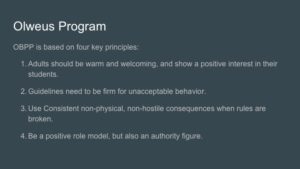
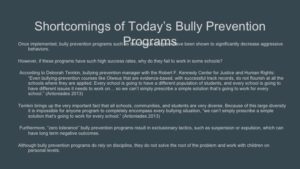
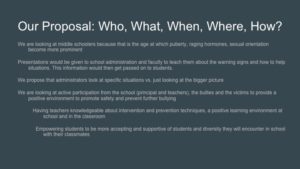

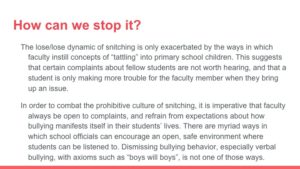
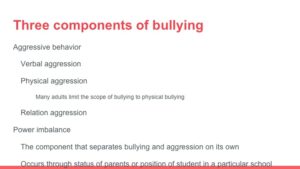
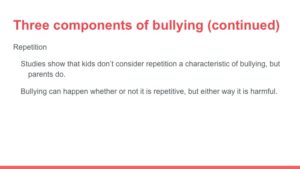
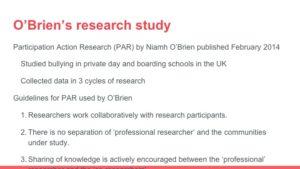
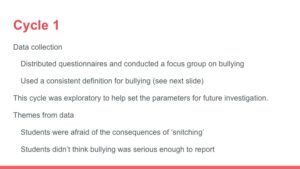
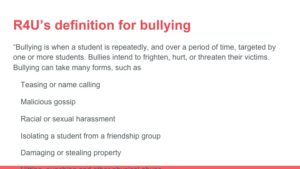



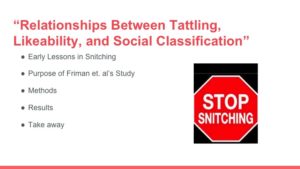
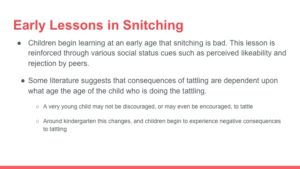
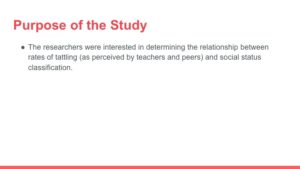

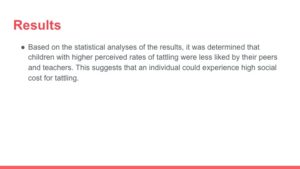
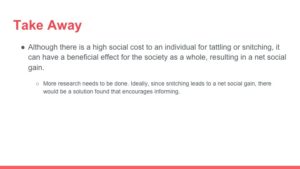

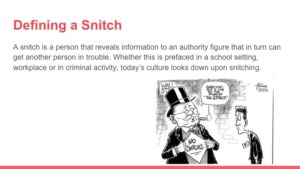
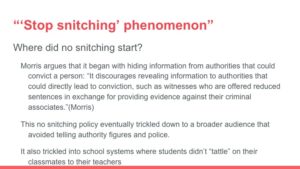


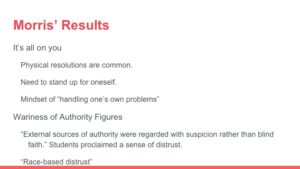
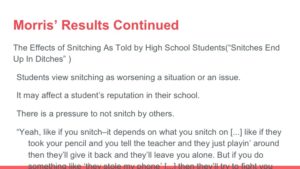
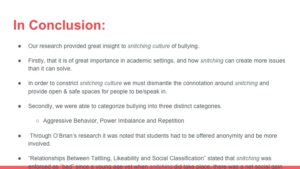
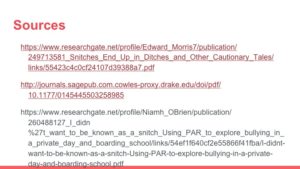

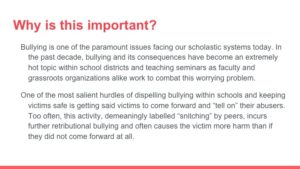


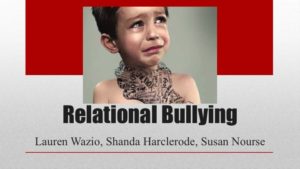
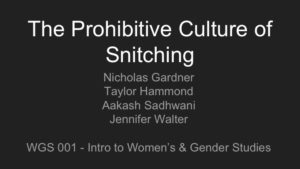
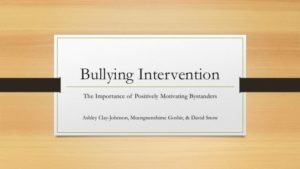

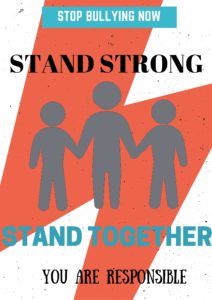
Recent Comments